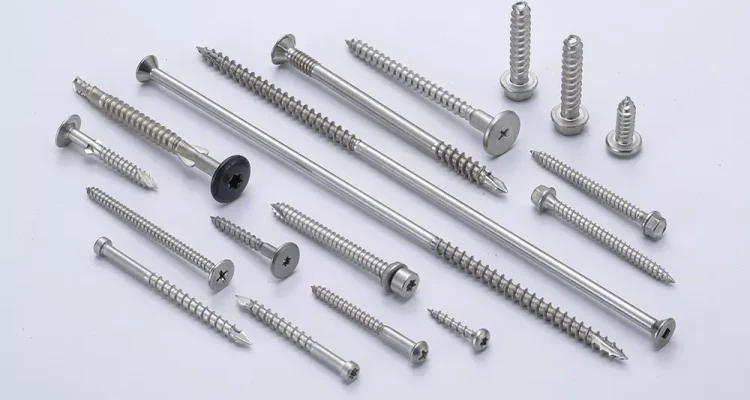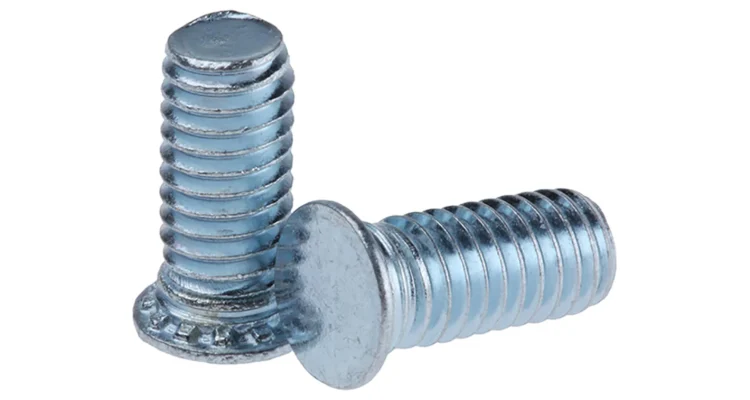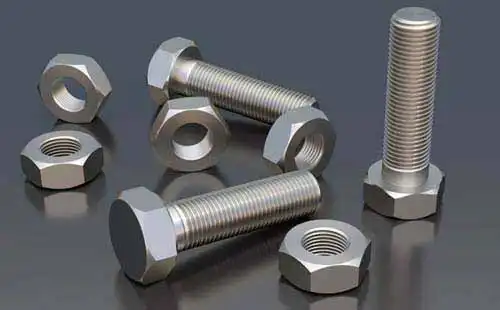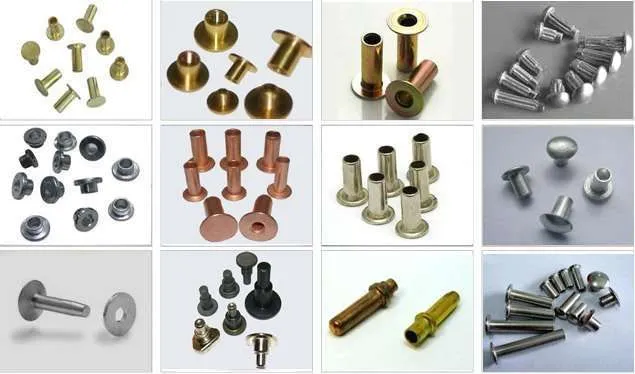
5 Key Points For Choosing The Right Screw Diameter
When choosing the right screw diameter, consider material thickness, load capacity, thread design, pilot hole size, and environmental factors to ensure stability and durability
Screw Gauges and Diameters
Thickness of the Material and Diameter of the Screw
Necessity to opt the correct diameter size of the screw: when it comes to woodworking and metalworking, the right screw diameter is very necessary for the joint structure. For example, in the case of woodworking, screws may need to penetrate as much as half the thickness of the material. If you are using a 1″ thick wooden board, a circular diameter that allows for at least a 1/2″ penetration is good, typically right at 0.25″ in diameter.
Charging Specifications and Diameter Options
The load that a screw will have to bear in turn affects the press on dimension. However, structural applications like deck railings require a larger sized screw to hold the load. This is why more heavy-duty screw applications, advice that you use a #10 diameter screw which is commonly about.inch 19 in diameter, but even that may be too small if you have a lot of load and need your connection to be solid and free of failure when stressed.
The Effect of the Thread Design on Size
V) The thread design of the screw is also an essential factor in the selection of the screw diameter. Softer materials like drywall can use a courser thread, while harder river woods a ferine thread is needed to prevent splitting the wood. The relatively fine thread design is used to handle the denser structure of the hardwood typically served by a #8 wood screw having a diameter of around 0.164 inches.
Pilot Hole Specifications
Drilling a Pilot Hole Correctly Saves Material The size of the pilot hole should be about 70-90% of the dia of screw and may vary according to the hardness of the material. For example, a #8 screw in softwood requires a pilot hole to be less than 0.164 inches, typically 0.14 inches.toString Splitting is not a concern, but supporting the screw so that it is easy to drive later is!
Screw Diameter & Environmental Factors
The size and type of screw to be used is determined by the environmental conditions ( moisture, temperature, chemical in contact with the screw etc). For coastal environments with its salt and moisture, use at least the larger diameter stainless steel screws to prevent corrosion and provide lasting stability. In well drilling, where the environmental conditions are even more challenging, it might be wise to size your pump diameter 0.01-0.02 inches with respect to similar applications in less harsh environments.

Matching Diameter To Thickness
Appreciation of Material Thickness
The correct screw diameter depends on the material thickness. As a general rule in construction and DIY projects, they say you should select the screw that penetrates for at least 60% of the thickness of the material. If you are joining 1-inch thick wooden boards, for instance, then a screw diameter that allows deep penetration, such as 0.25 inch or a #14 gauge screw, will be necessary to avoid the breakage of the joint.
Maintaining the Correct Loading
Heavier materials can generally require larger loads. The obvious is to use a screw diameter that is appropriate to the weight that the joint will have to bear. It is also widely accepted in structural steelwork that screws measuring from 0.25-0.375 inches in diameter are used where greater loads are anticipated to ensure the rigidity of the structure.
Thread Type Consideration
The type of thread affects the choice of the screw diameter as it varies with the material. Larger softwood such as a #12 screw (about. This helps spread the load over a wider area, reducing material damage.
Optimal Pilot Hole Strategy
A precise pilot hole is necessary for the most efficient way of placing screws. For hardwoods, the diameter of the pilot hole should be 80% of the screw’s diameter; other materials require a smaller size pilot hole to prevent splitting. A #10 gauge screw has a diameter of 0.190 inches, so a pilot hole around 0.152 inches will work:
Adjusting to the Environment
When working in high humidity or with exposure to chemicals, the right diameter of the screw also includes choosing materials that are suitable to resist corrosion, such as stainless steel or coated screws. In these instances, larger diameters may be selected to offset a potential reduction in strength. In marine applications, for example, a slight step up is required in the diameter of the screws to cove corrosion resistance and other performance parameters.
Importance of Diameter Selection
Material Thickness Accomadtaion
The right diameters of screws must be chosen to work with material of a certain thickness to prevent things like splitting or stripping. For instance, it is not uncommon to see a 0.14 inch diameter screw (#7 screw gauge) securing a hinge in a 0.75 inch door. This size provides perfect grip and power without compressing the Wood.
Load Bearing Requirements
Screw Diameter: The diameter has a profound effect on the screw load-carrying ability. Larger diameter screws in construction are simply preferred for load-bearing work. As an example, you would use 0.25 inch diameter screws for structural framing in homes to provide a high enough amount of strength to bear the load of supporting significant weight and stress.
Thread Configuration
Screw Diameter and Thread Type: Balances Material Integrity and Applied Function Similarly, if machinery is to be mounted on metal, a screw with a fine thread is needed, as well as a smaller diameter screw, such as 0.18 inch (equivalent to a #8 screw gauge), to limit the displacement of material and increase grip.
Pilot Hole Precision
It is important that the pilot holes have the correct size for the screw to keep the material from cracking. The pilot hole in hardwood installations should be 80% of the screw’s diameter. For instance, with a 0.16 inch diameter screw, a 0.128 inch pilot hole would be perfect to keep the screw snug while avoiding cracking the wood.
Environmental Adaptability
Selecting the screw size will mean having to take into account certain climatic impacts of corrosion or thermal expansion. We recommend that you use corrosion resistant material like stainless steel screw and slightly bigger diameter in coastal areas. In those same conditions, one could lean towards a reinforced 0.20 inch diameter screw instead of a standard 0.18 inch, to add some durability and resistance against tough conditions.
Common Diameter Ranges
Sizes for Woodworking
Wood screws are available in diameters from 0.112 to about 0.216 inches (#4 to #14 screw gauge). It’s all dependent upon the type of wood and the use case. For example, #8 screws (0.164 inches) are the seemingly most common size for general furniture because they hold well but don’t tear up softer wood pieces by being overly large.
Metal Fastening Diameters
Smaller-diameter screws are frequently employed to reduce material displacement when fastening metal components. Thin sheet metals usually get the #3 screw gauge (0.099 inches) up to the #6 screw gauge (0. These sizes are sufficient to maintain a solid grasp on the sheet metal, and also prevent the sheet metal from deforming or breaking in intense mechanical loading.
Construction & Structural Applications
Building (framing, outside constructions) – Need larger screw diameter. Ranges from 0.177 to 0.250 inches are typical for #8 screw to #14 screw gauges. For example, when deck building you can use #10 screws (0.190 in) which provide you with the sturdiness and strength necessary to resist the elements.
Electronics Applications Specialized
Very small screws are typically used in electronic devices, often ranging from 0.039 inches (#0 screw gauge) to 0.079 inches (#2 screw gauge). Hexagonal screws are especially important in confined areas and when mounting electronic components, as they add the necessary grip while also protecting the more delicate parts.
Medium Load, Safety Critical Fastenings
For applications where safety and load-carrying capacity are top priorities, including in the automotive and aerospace industries, screw diameters could be more likely to be between 0.250 inch and 0.375 inch. There are selected larger screws implemented to handle the massive stresses and strains, which are safer and better to assemble in key usages.

Measuring and Verification Tips
Accuracy with the right Caliper
You can use a digital caliper to measure very accurately so that you pick the correct screw diameter Smootjewellery offers these digital calipers of best quality to the jewelry makers to measure the screw diameter size to 0.01 meters accuracy so that to make sure the exact small jewellery screw kit. For example, in case of machine screws where proper fitment is essential, measuring with a caliper before installation avoids mismatches which can cause joints to fail.
Quick Reference
Screw Gauge Chart – A Quick Reference To Find The Diameter of a Screw They would generally list a screw size (#4, #6, #8, etc…) along with its common diameter, both in inches, and millimeters. Based on your specific application, screws can be easily tested against this reference chart to see if it falls within the correct diameter range (ex: medium-load woodwork generally uses #8 screws, which are nominally 4.2mm (0.164 inches) in diameter).
Thread Pitch Measurement
The blueprint should give you the course and fine (thread pitch) threads to match the hole or nut depending on what you are doing. This is then followed by using a thread gauge which enables you to count the number of threads per inch (or mm) to guarantee proper fit and thread engagement. As an example, a standard coarse thread gauge used in wooden works is 32 tpi that is much widely used for the softwood and some hardwood as well.
Pilot Hole Testing for Screw Fit
This is the final time to test it into a pilot hole before you install it to make sure you don’t need to drive it in with too much force, and to prevent extra slack. The pilot hole should be slightly smaller than the screw diameter to provide a snug fit. For a #10 chipboard screw, a 3.2 mm pilot hole would make for an ideal pilot hole diameter. This testing can help prevent material splitting or thread stripping when in use.
Material Specific Adjustment
It may need adjustments depending on the hardness and brittleness of the material. If choosing a smaller diameter drill bit to avoid breaking the material for harder material and because a larger diameter helps to spread the load out over a larger area for holding power for a softer material. Like, if you work with hardwood you might choose a screw size slightly below its maximum recommended so as not to split the wood, etc.



